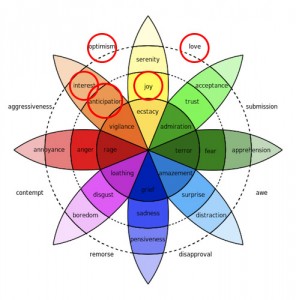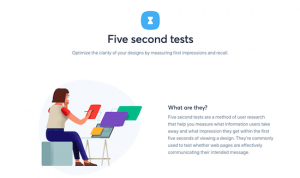If you’re using a CRM to house leads then you likely have the campaign tracking tools for middle funnel activity even if you have an offline transaction point.
![]()
Brands with an offline transaction point often struggle to measure the full customer journey from acquisition source through to revenue. Often times, if revenue can be attributed back to something, it’s to the marketing channel responsible for the lead. This measurement is usually implemented with either a first or last touch attribution model for channel attribution and completely leaves out the rest of the customer journey.
The missing visibility and measurement is post lead acquisition. Once a lead enters our systems, how do we measure the effectiveness of our campaigns and lead treatments? Even better, how do we attribute revenue to content pieces and treatments applied to that lead in-funnel?
The answer may be something we already have access to. If you’re using a CRM to house leads then you likely have the tools to track middle of funnel activity at your fingertips with Campaign Tracking.
What is campaign tracking?
Campaign tracking within a CRM is technically an entity or object that tracks a variety of information about an event, mailing, emailing, or other marketing initiatives. It’s basically a container that houses all of the components of a campaign across channels and treatments.
Leads and contacts can be members of one or more CRM campaigns allowing visibility into the effectiveness of both single and multiple campaign influence across all levels of our funnel from lead to cash.
![]()
Image credit: www.Salesforce.com
What are the benefits of CRM campaign tracking?
Depending on the CRM and how it has been architected and implemented, campaign tracking provides a significantly deeper level of insights and measurement including the ability to
- Tie marketing activities to our sales pipeline
- Compare the effectiveness of different marketing initiatives and their influence on each other
- Measure mid-funnel activities alongside marketing channel attribution
- Measure the effectiveness of content post lead acquisition
- Inform the sales team of historical marketing activities via the contact record
- Roll-up similar lead sources into a single object
- Connect online & offline activities
- Enable holistic ROI reporting
- Preserve data integrity & maintain hygiene
- Enables multi-touch attribution modeling within your funnel
Attribution and CRM campaign tracking
Now that measurement is enabled at such a granular level in-funnel we can see marketing activity influence across the funnel from lead to customer. This is where attribution really gets complex! Similar to the first-touch, last-touch, multi-touch debates on marketing channel attribution. Now we have these same debates in-funnel when attributing back to campaigns within our CRM.
Do we give credit to the campaign that initially acquired the lead?
Do we give credit to the campaign the lead responded to before they converted to an opportunity?
Do we give credit to the campaign that influenced the lead right before they converted to a customer?
First-touch attribution model
First-touch is pretty self-explanatory. In this attribution model, all credit is given to the very first action taken by the user that created the lead record.
![]()
Images credit: www.Curata.com
The first-touch attribution has its advantages, it’s super easy to implement. The lead is tagged using a custom field and that field rides on the record all the way through the funnel to closed won. However, this model leaves so much of the story out neglecting to consider all other interactions the user had or actions the user took beyond that initial entry into the database.
Last-touch attribution model
Last-touch attribution is the opposite of first-touch. Instead of giving all credit to the first action the user took, we’re giving it to the last step the user took. Also easy to implement by merely over-riding that custom field.
![]()
Last-touch is fantastic for measuring the effectiveness of campaigns targeting the bottom of the funnel geared directly toward driving a purchase decision. However, if we only look at what ultimately turned into a sale, we really lack insights into what levers to pull to get them to that point and we are leaving a ton of opportunity on the table. We are also boxing ourselves into diminishing returns and expensive tactics and are unable to scale our marketing programs.
![]()
Image credit: www.Curata.com
Multi-touch attribution model
Multi-touch models are more complex, recording all interactions and giving credit to all touch points in the journey. They provide the clearest picture of attribution and provide the most insights regarding what levers to pull across the funnel to improve velocity and efficiency of our marketing investments. To implement a multi-touch attribution model within your funnel you have to utilize CRM campaign tracking. This is the biggest benefit of the campaign tracking tools within your CRM.
CRM campaign tracking reports
Once campaign tracking is properly set up and working within your CRM and when used in conjunction with a clean and granular lead source strategy, CRM campaign tracking opens up rich and robust reporting options. Your data will tell a very different story!
Here are a few sample reports that can be generated when both campaign tracking and a clean and granular lead source strategy are applied within Salesforce.
![]()
![]()
I’d love to hear how you are utilizing campaign tracking within your CRM and what kind of new insights you’ve been able to pull. My guess is that once you were able to get to this level of insights, marketing resources were moved around to concentrate on what you didn’t even know was working within your marketing program.
Opinions expressed in this article are those of the guest author and not necessarily Marketing Land. Staff authors are listed here.
Marketing Land – Internet Marketing News, Strategies & Tips
(95)
Report Post






